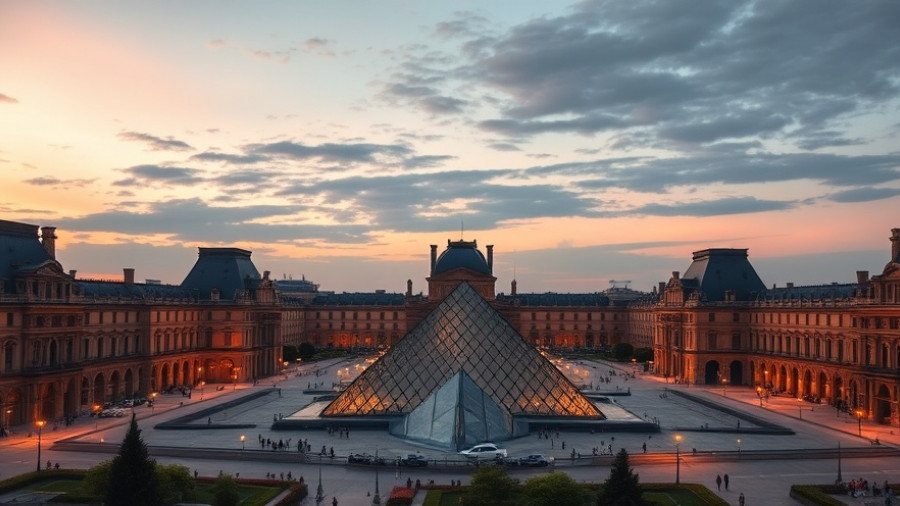
The Daring Heist: A Daylight Robbery at the Louvre
In a brazen daytime operation that shocked not only France but the world, thieves executed a carefully planned robbery at the Louvre Museum, escaping with royal jewels valued at a staggering 88 million euros (approximately $102 million). Using a crane, they smashed through an upstairs window in mere minutes, targeting precious items from a gallery dedicated to the treasures of France's history.
The Economic vs. Historical Impact of the Theft
As Paris public prosecutor Laure Beccuau noted, the incident caused significant economic damage, but the historical implications of losing such irreplaceable items are greater. The eight stolen pieces included unique jewelry belonging to 19th-century queens, such as a tiara and earrings that blend artistic beauty with cultural significance. The theft has stirred debates over national security and preservation of heritage, especially as France's historical treasures face increasing risks.
Uninsured Treasures: What This Means for Insurance Claims
Surprisingly, several reports indicate that the stolen jewelry was uninsured. This raises significant questions regarding the protection of high-value art and collectibles. Museums and galleries rely heavily on insurance coverage to mitigate risks associated with theft or damage. Without it, the financial repercussions of such losses fall entirely on the institution, potentially affecting future funding for maintenance and security upgrades.
Security Concerns and the State of Museum Protection
France's escalating concerns about museum security have been highlighted by this incident. Reports have shown a "worrying level of obsolescence" in security measures across cultural sites, particularly at the Louvre, which has seen a massive uptick in visitor numbers. Authorities Wednesday are expected to confront this issue as Louvre Director Laurence des Cars prepares for discussions with the Senate on necessary renovations and security enhancements.
What Can We Learn About Protection and Claims for Valuable Art?
The robbery raises critical insights into how institutions can better protect their assets. Given the potential for large claims in the event of theft or loss, art institutions might need to reassess their insurance coverage strategies, focusing on updating their policies and increasing overall security. Understanding the risks and protections available can empower institutions and collectors alike to safeguard their precious items.
Future Implications: Trends in Museum Security and Insurance
The repercussions of this high-profile heist will undoubtedly impact how museums approach security and insurance moving forward. As insurance claim disputes continue to arise within the art and collectibles market, museums might adopt more rigorous processes for evaluating potential risks and ensuring adequate coverage.
In the broader insurance industry, the focus may shift toward understanding claims fraud and ensuring institutions are prepared for unexpected losses. The lessons learned from this incident could lead to significant changes in how art is valued and protected against theft in the years to come.
In summary, the Louvre robbery serves as a stark reminder of the vulnerabilities faced by institutions housing irreplaceable cultural artifacts. It is imperative for museums, collectors, and insurers alike to engage in proactive discussions about safeguarding our history while navigating the complexities of claims and insurance.
 Add Row
Add Row  Add
Add 




Write A Comment